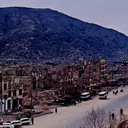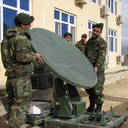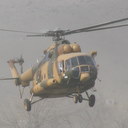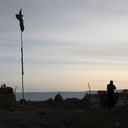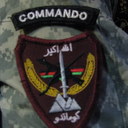
Comm Support Unit adviser, proudly wearing the ANA Commando patch*
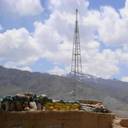
ANP radio antenna, supporting a District Headquarters in Wardak Province**
I’ve got a GREAT team of Coalition Soldiers, Sailors, Airmen, and Marines in my organization; here are three that really stood out recently:
Senior Airman Taylor is a technician working in my Operations section, connecting NTM-A and CSTC-A. He is responsible for the installation, operation and maintenance of the classified Coalition network (called Afghanistan Mission Network, or AMN) at Camp Eggers – 555 users, 360 computers, 25 printers, and 50 computer-based phones…growing every day.
Recently, SrA Taylor provided above-and-beyond comm support to the Joint Planning Group charged to relook the Command’s mission and way-ahead. This has been an incredibly high-visibility effort, involving multiple meetings with LTG Caldwell, the NTM-A Commander and CSTC-A Commanding General. SrA Taylor engineered and implemented AMN connectivity for the group despite starting with ZERO comm infrastructure in their designated meeting space. He connected over twenty senior officers with secure comms and enabled in-depth analysis across fourteen different staff sections, allowing the group to chart the way forward for the Command.
Electronics Technician First Class Peterson works in my Afghan National Army Communications section, supporting ANA command and control. He serves as the satellite communications trainer/adviser for the ANA Communications Support Unit (CSU). As an adviser, ET1 Peterson helped the CSU with their first operational deployment, ever. I’ve written about this deployment before, but the short story is until ET1 Peterson and the CSU arrived, the Commando Brigade Headquarters had only radio communications. Only two days into the deployment, Commando leaders had video, voice, and data comms with the National Military Command Center, allowing them to effectively respond to the 18 January insurgent attacks in Kabul. And today, the Commandos are participating in major combat operations in and around Marjah, in central Helmand.
Additionally, ET1 Peterson provides direct support for the American Forces Network (AFN) television broadcast system on Camp Eggers. He helped replace cable and perform maintenance on the Camp Eggers AFN system. In the process, he isolated and fixed an intermittent problem with AFN reception affecting our headquarters building. These trouble prevention and troubleshooting skills earned the personal recognition of LTG Caldwell.
Last but certainly not least, Lieutenant Commander Stewart serves as the Radio Fielding Branch Chief in my Afghan National Police Comms section. He’s driving a $10 million plan to install over 400 VHF radio repeaters throughout Afghanistan, enhancing the tactical command and control capabilities of the ANP. He developed a strategy to use existing commercial cell phone towers, saving significant time and money compared to building towers from scratch. LCDR Stewart is also finishing up a UHF radio system installation here in Kabul. This is a trunked system which allows almost unlimited talk groups…which means local police, fire fighters, medical providers and other first responders in the capital can use their radios simultaneously, without stepping on each other’s voices, even during a major crisis. He has already started operational testing; I expect the the system will soon be functioning as designed for more than 3,700 users.
Finally, LCDR Stewart has been directly responsible for working with Afghan Ministry of the Interior officers to field more than 300 vital pieces of radio equipment for Afghan Gendarmerie Force units participating in Operation Moshtarak near Marjah. Afghan and Coalition forces are currently clearing the area of insurgents; LCDR Stewart’s radios will help Afghan police forces hold the line against an insurgent return, providing the Afghan government time and space to build capability within the area.
Bottom line: I offer SrA Taylor, ET1 Peterson, and LCDR Stewart as shining examples of the best qualities of this Command – agile and adaptive, culturally respectful, and innovative. It is my pleasure and my honor to serve with them here.
* Photo by ET1 David Peterson.
** Photo by ITC Greg Laskowski.
Share or add this blog to your favorites at


Read Full Post »















